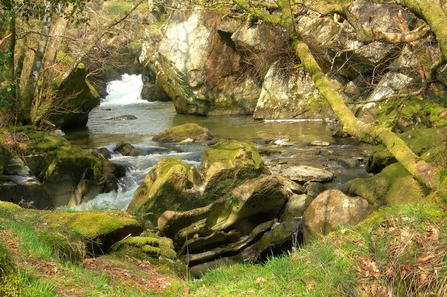In March last year, Radnorshire Wildlife Trust (RWT) received a Nature Networks grant through the National Lottery Heritage Fund in partnership with the Welsh Government. This grant, running until spring 2026, provides £221,141 to enhance climate adaptation and resilience through nature’s recovery at Gilfach Nature Reserve. A core goal is to share our learnings from the methods we explore with those in the Marteg Valley and to welcome the community to this exceptional site.
Conservation Grazing Enhancements
In 2024, we took a significant step towards improving conservation grazing at Gilfach. A livestock handling facility was installed on the Gamallt hillside to the south of the site, enabling better access to previously under grazed areas. Complementing this, we invested in 20 NoFence GPS cattle collars. These collars enhance our ability to manage grazing by focusing pressure on specific habitats and improving animal welfare. The collars were introduced to support a herd of native cattle brought to the site by our new grazier last summer.
We also hosted an evening gathering for neighbouring landowners at Gilfach, in collaboration with the Wye Adapt Climate Change project. The event fostered discussions about the project and broader concerns around nature and climate in the Marteg Valley. Additionally, NNF3 funding enabled us to provide training for our reserves team and volunteers, equipping them to support the project’s delivery effectively.
Woodland Transformation
At the end of December, we secured the necessary permissions from Natural Resources Wales to proceed with transforming a remnant commercial conifer plantation on the Gamallt hillside. This area will be regenerated into a native broadleaf woodland. In tandem, we will enhance the existing birch woodland by creating a series of rides and glades to diversify its structure. Following a competitive tender, we’ll collaborate with a local contractor to complete this work in 2025, with profits from timber sales supporting RWT’s efforts at Gilfach.
Project Evaluation and Learning
Starting in January, we’ll work with CFP landscape and heritage consultants to evaluate the project. This process will assess how “Gilfach Nature Reserve – Climate adaptation and resilience through nature’s restoration” performs against its objectives and outputs. The evaluation will involve gathering evidence and engaging with a diverse group of representatives, including volunteers, visitors, neighbouring landowners, local community members, and RWT staff, to capture insights and measure the project’s impact.

